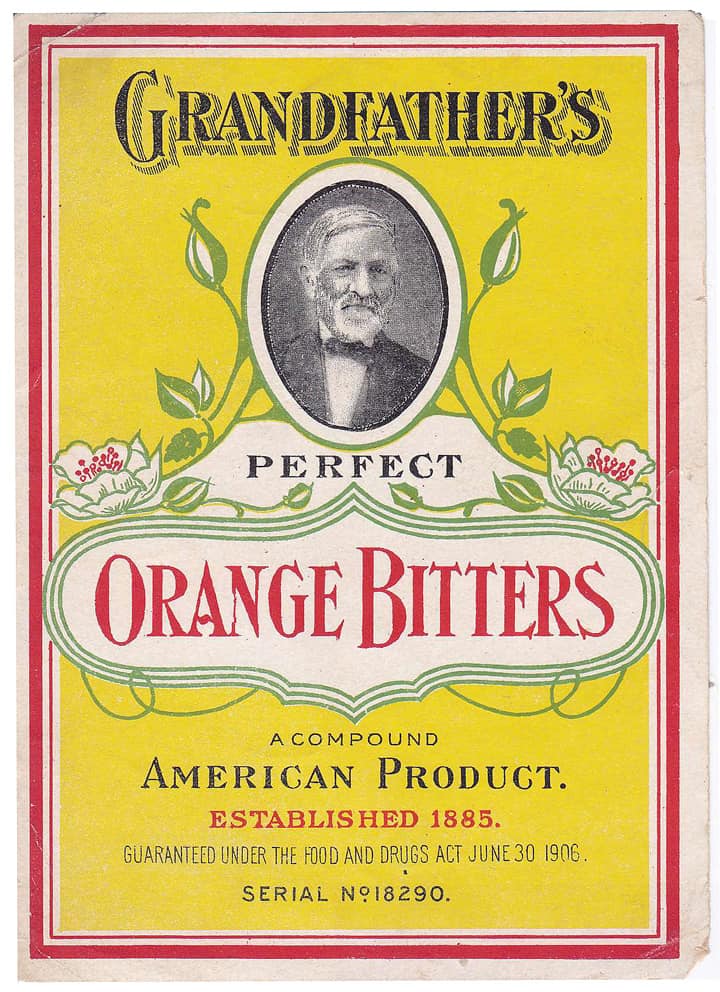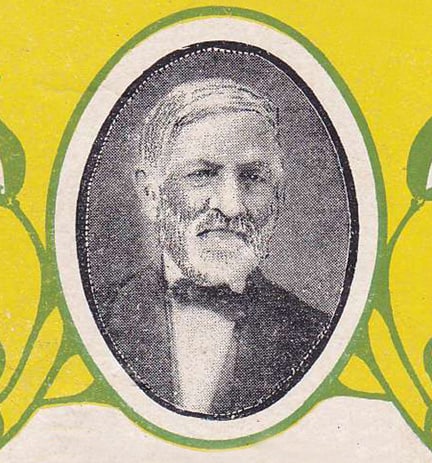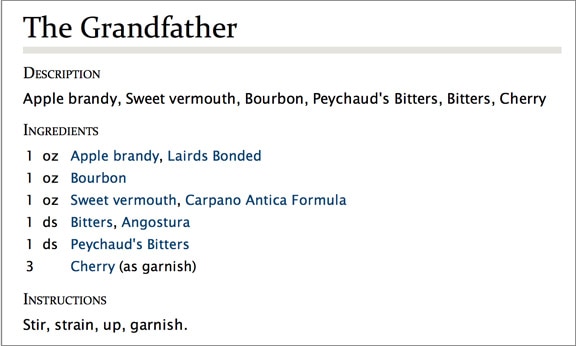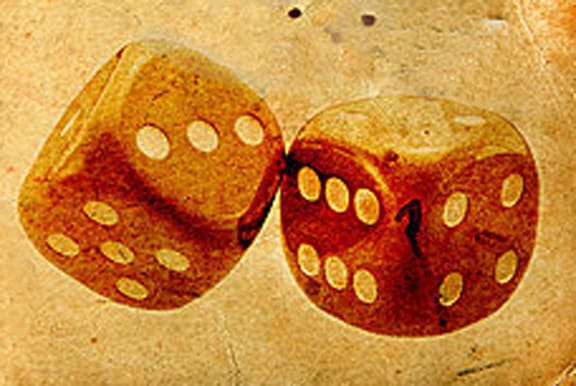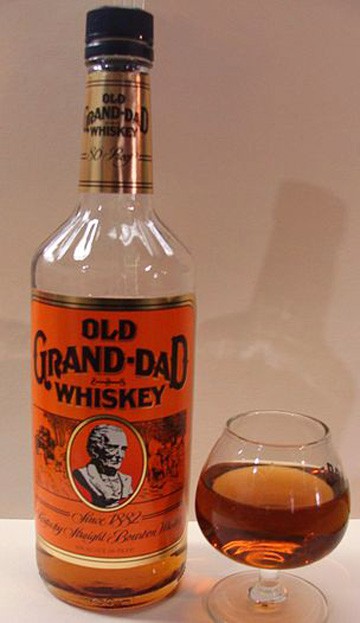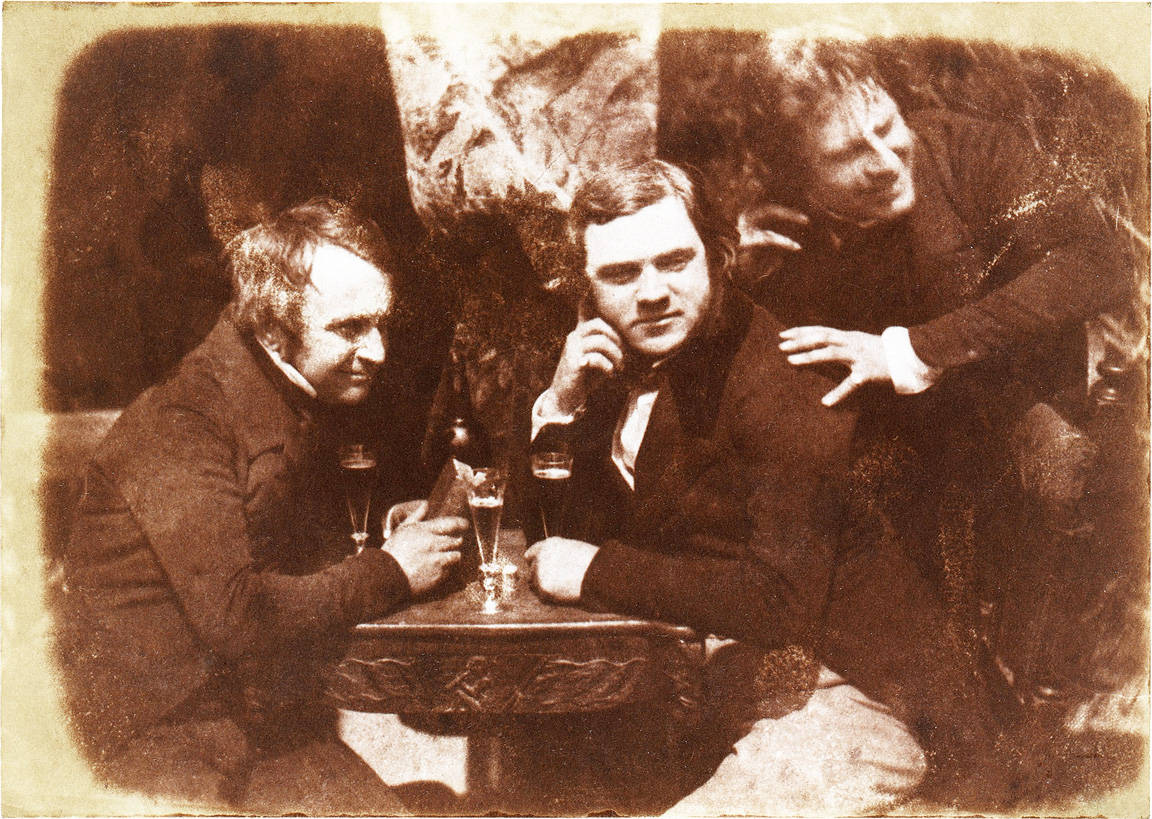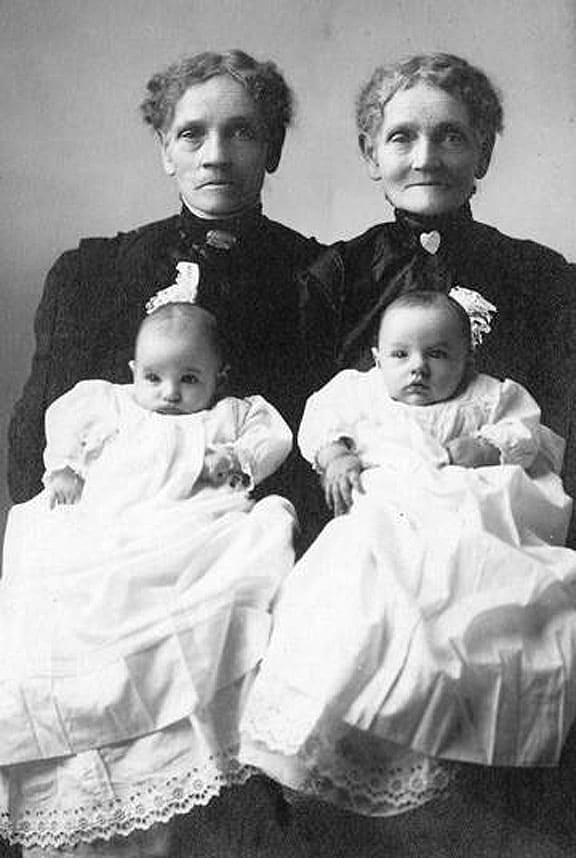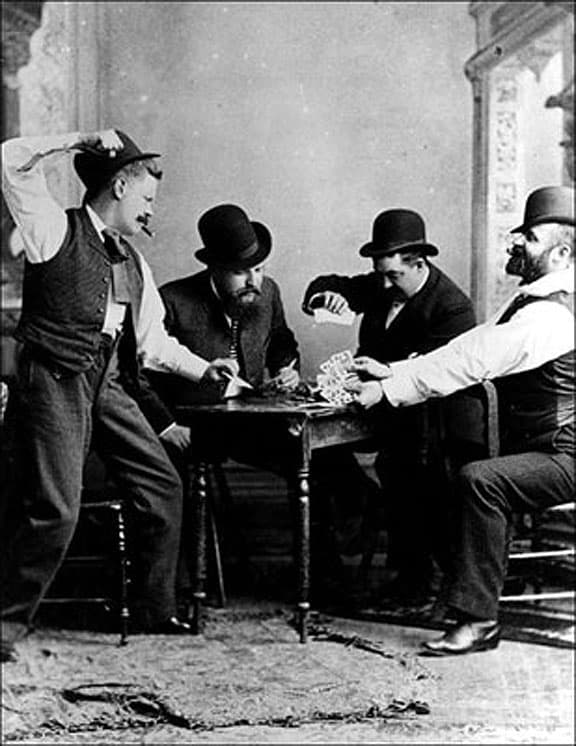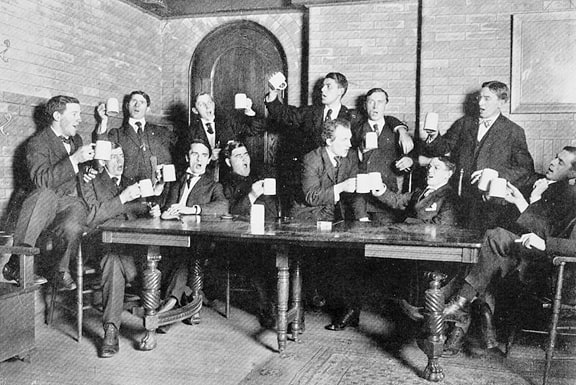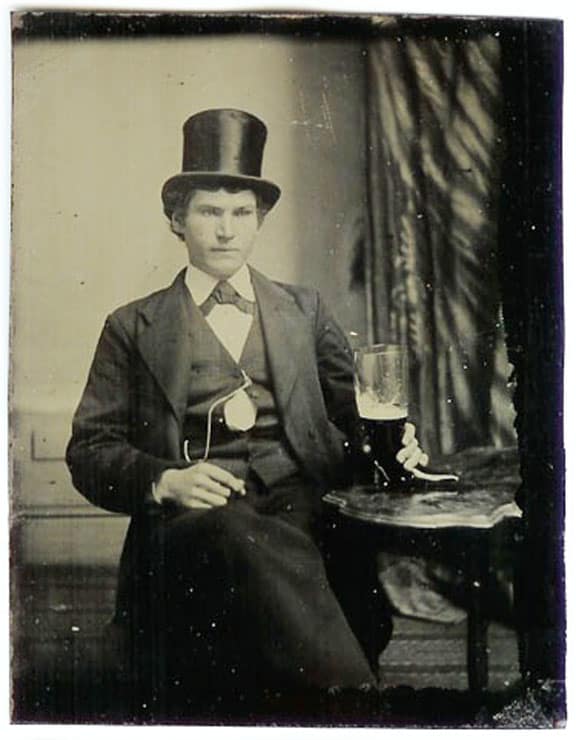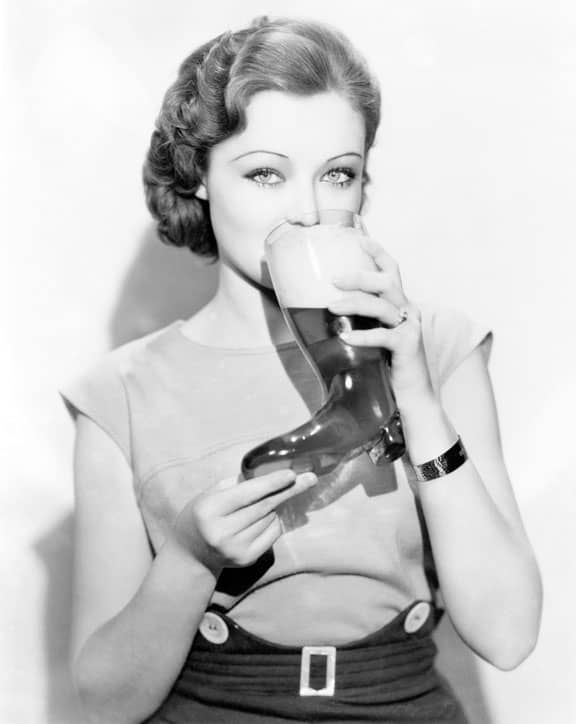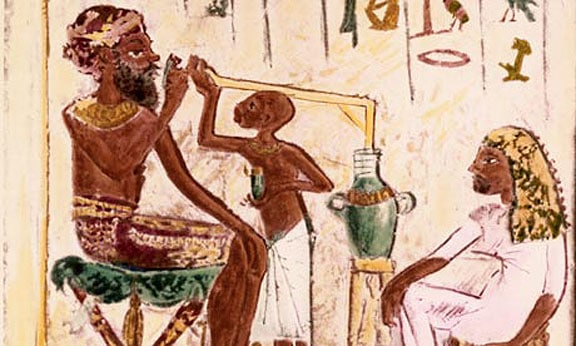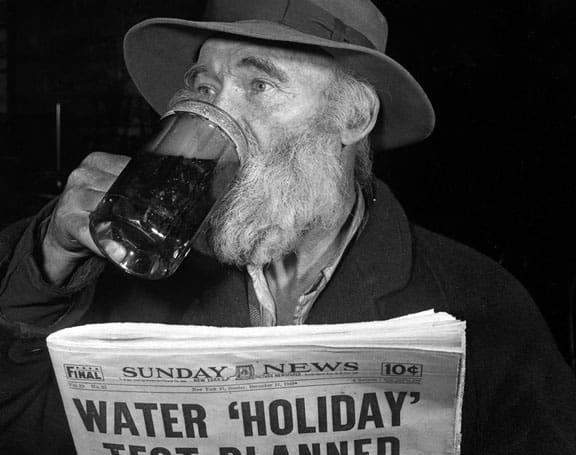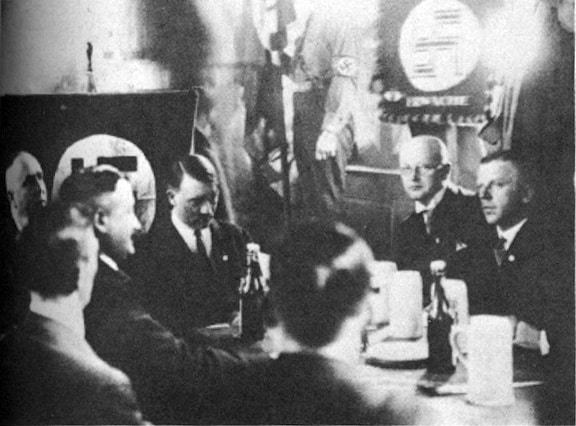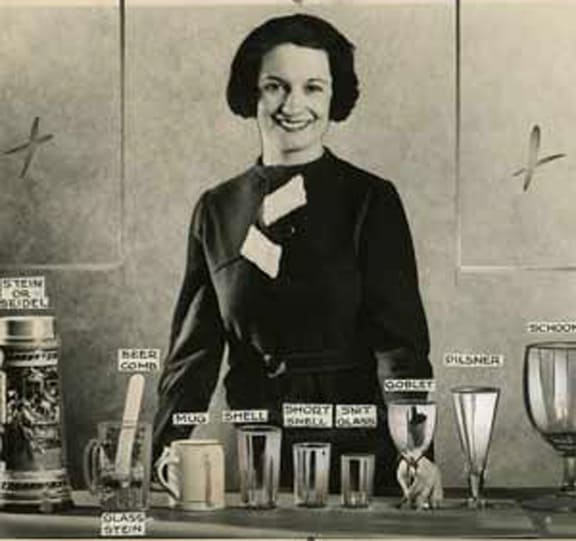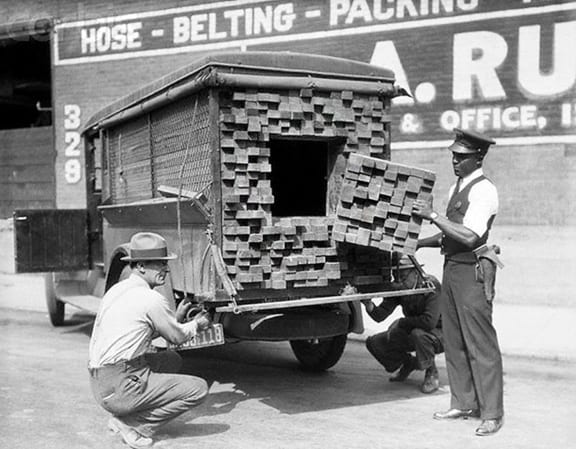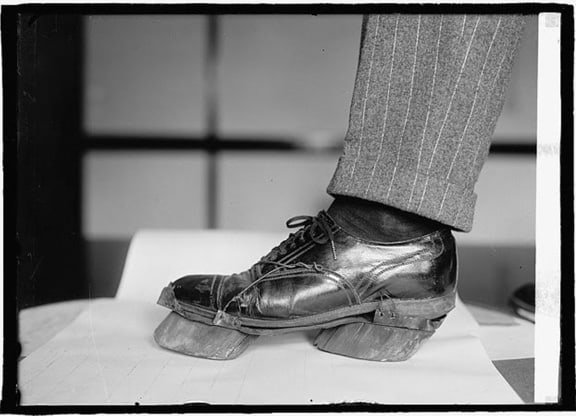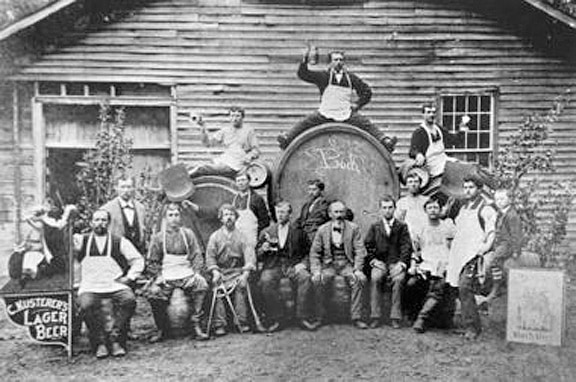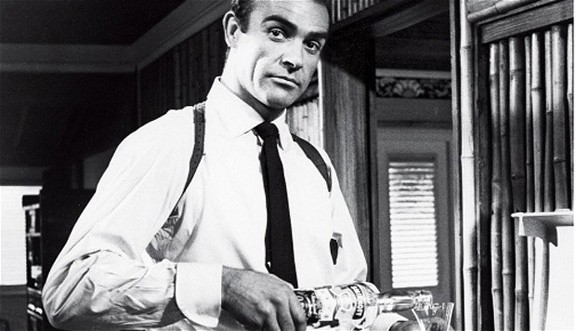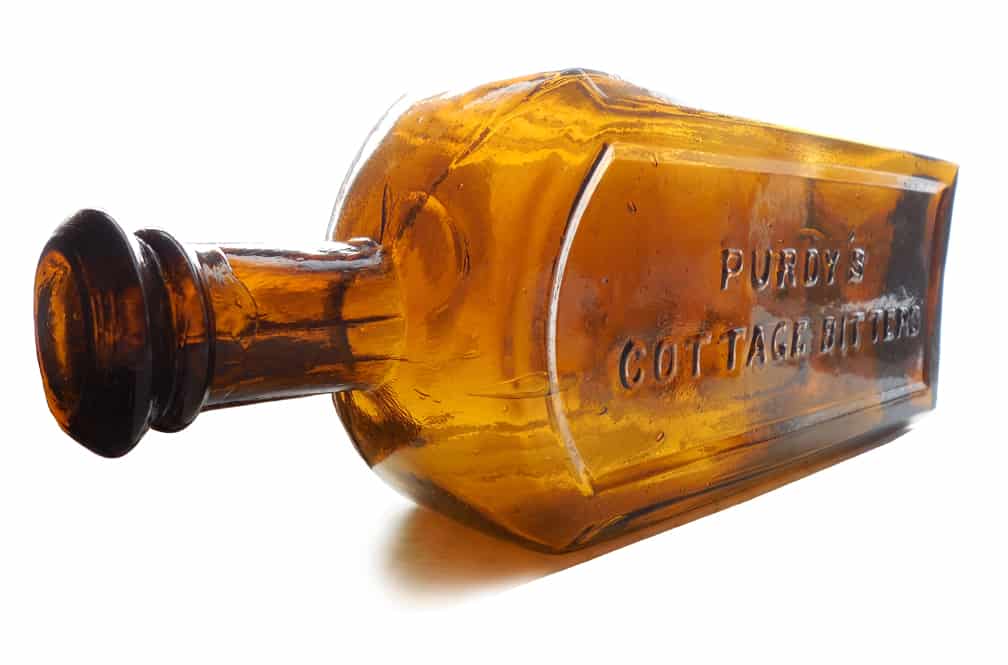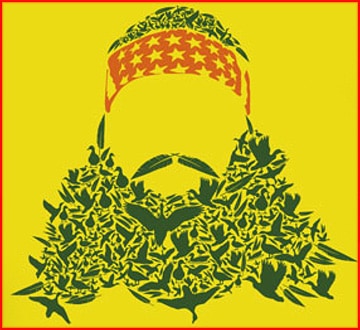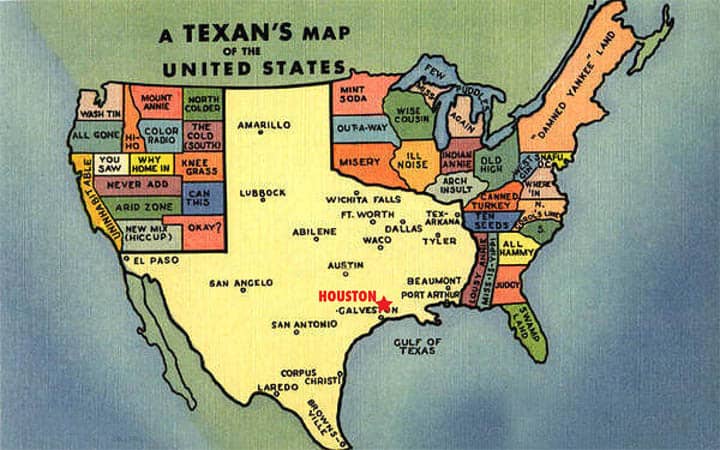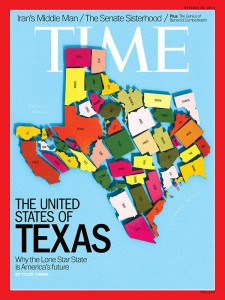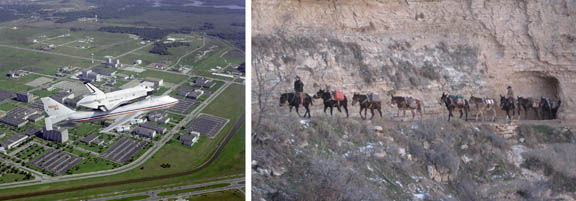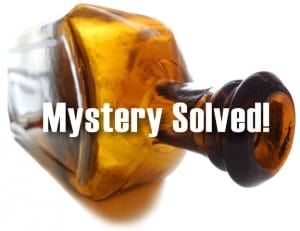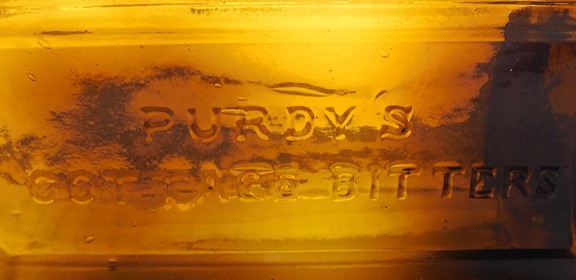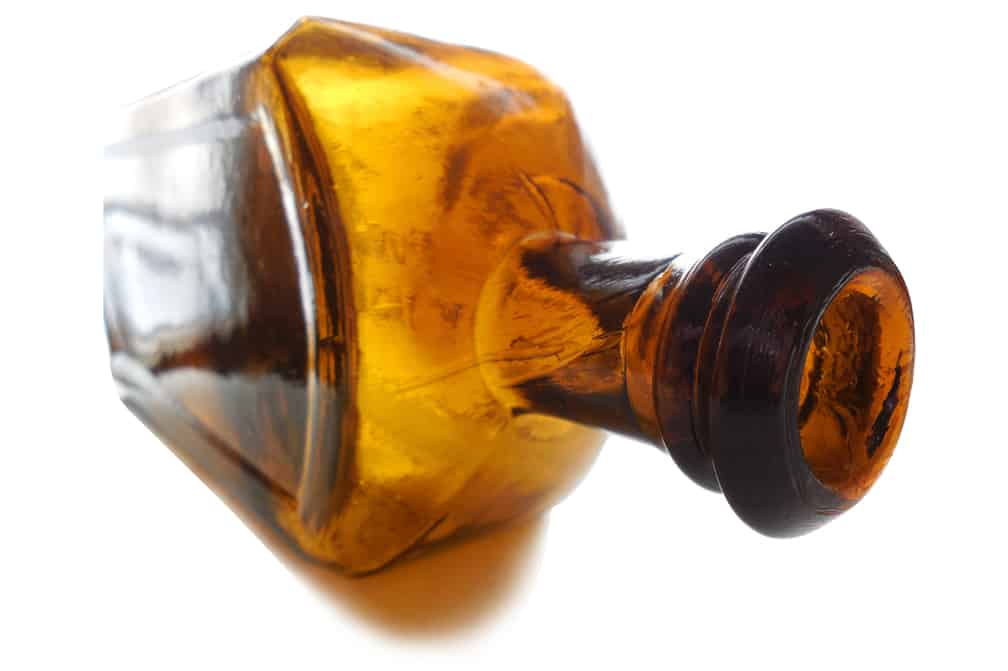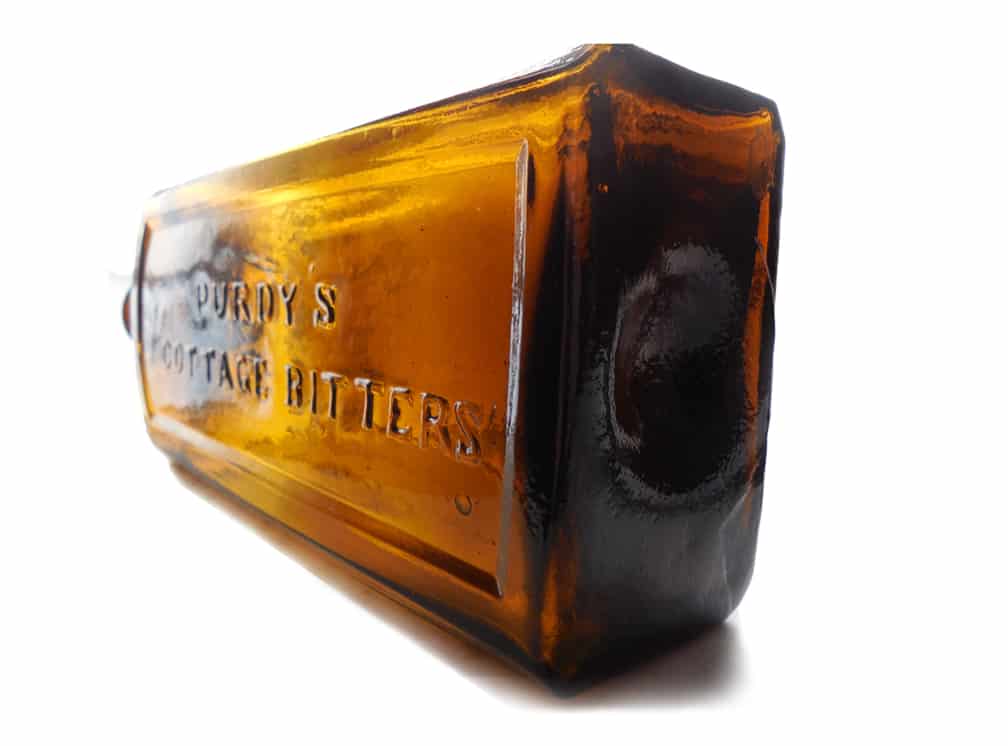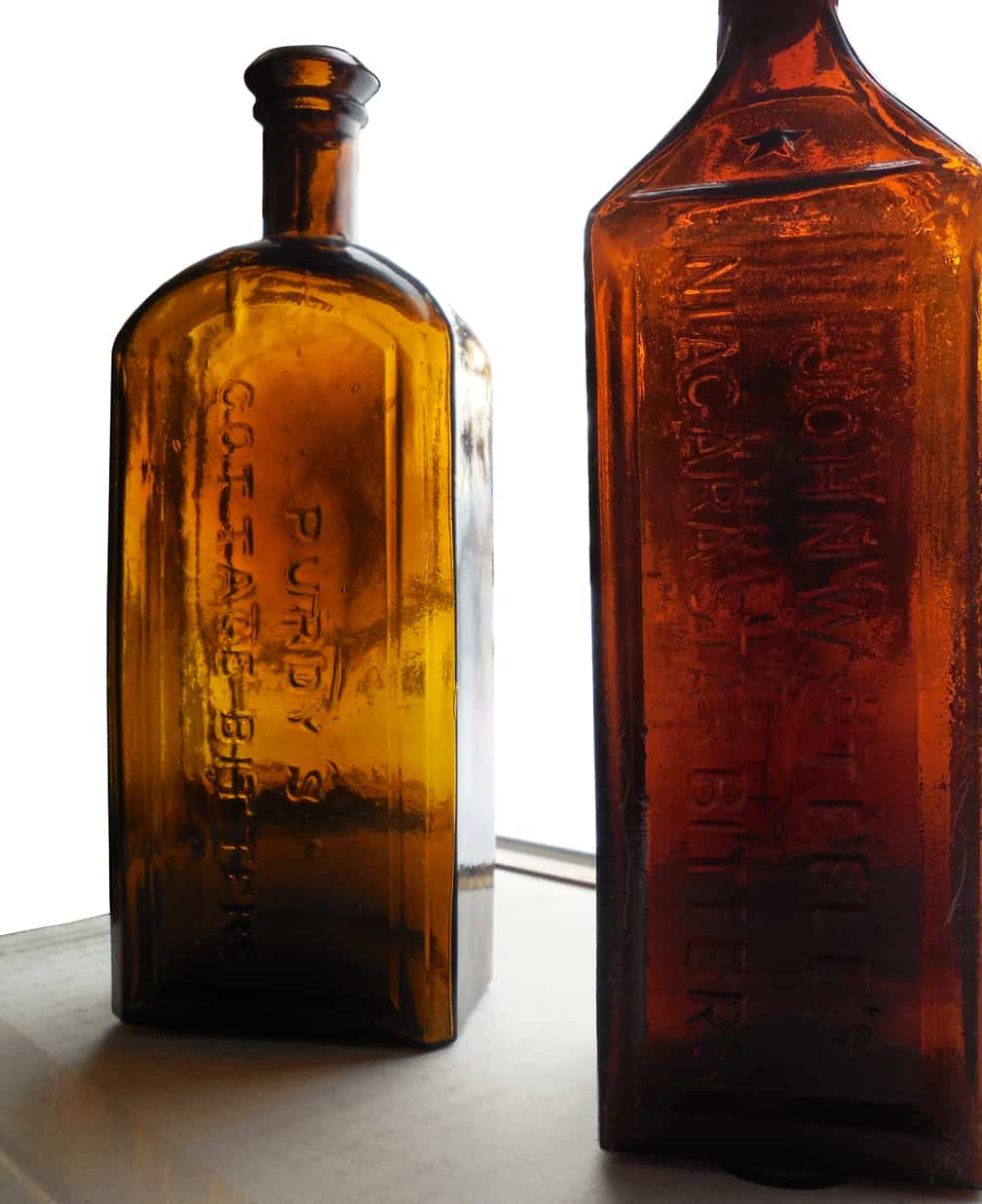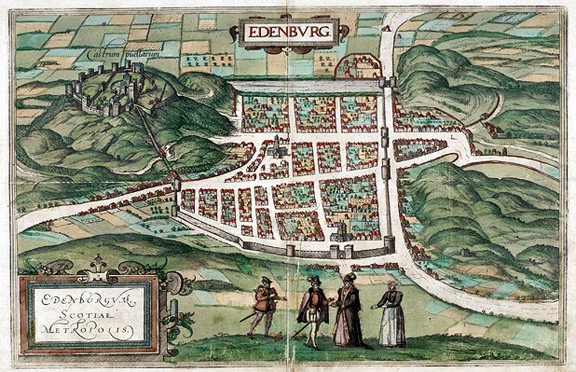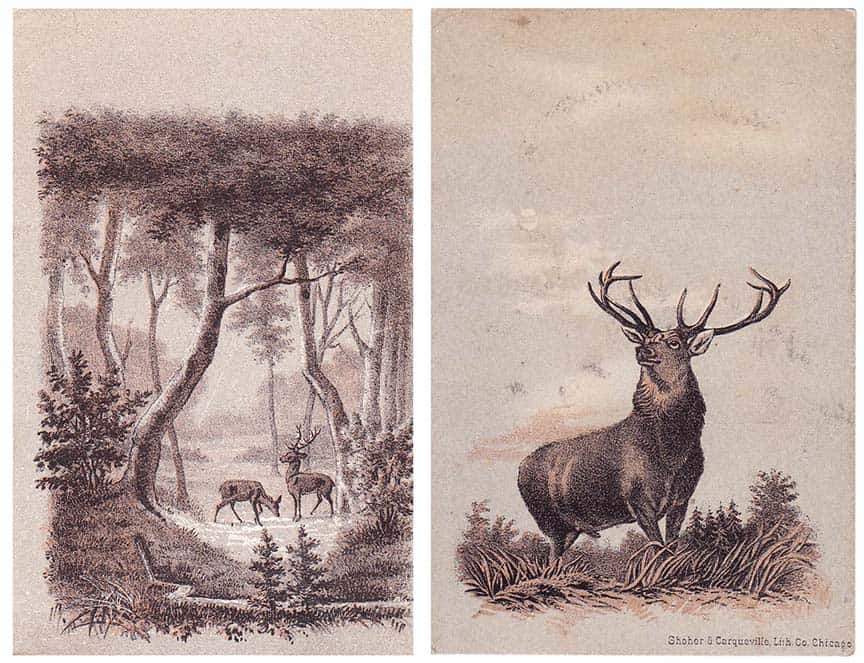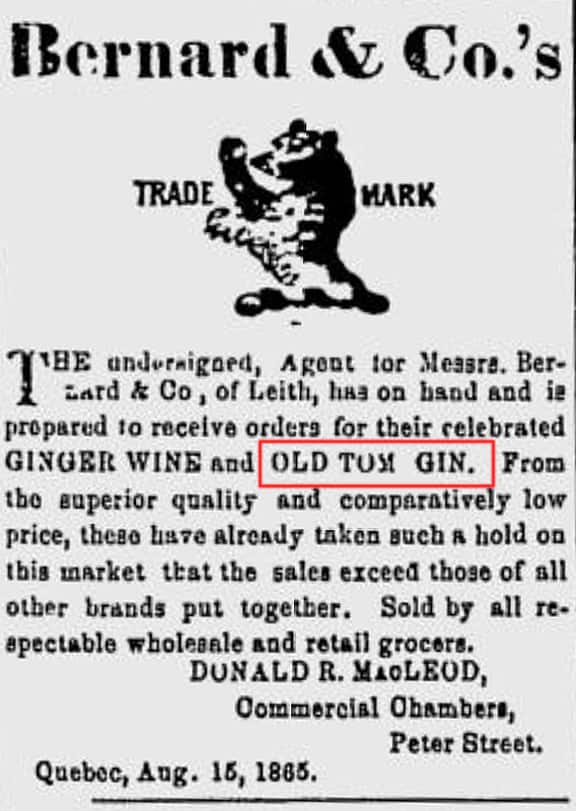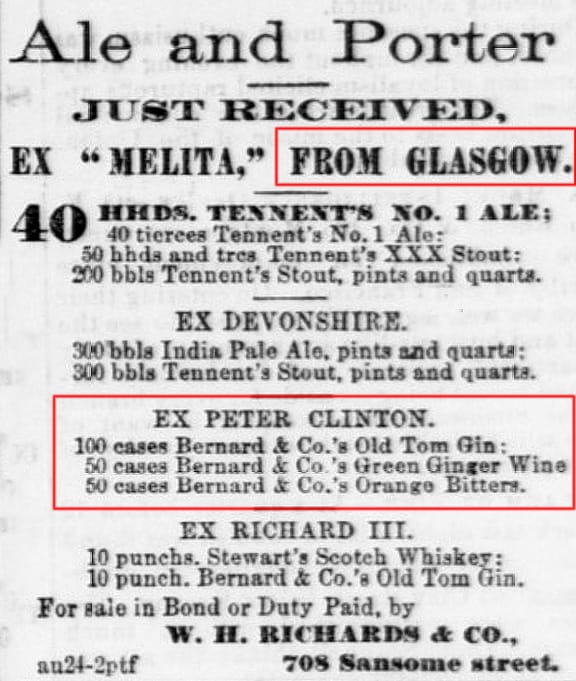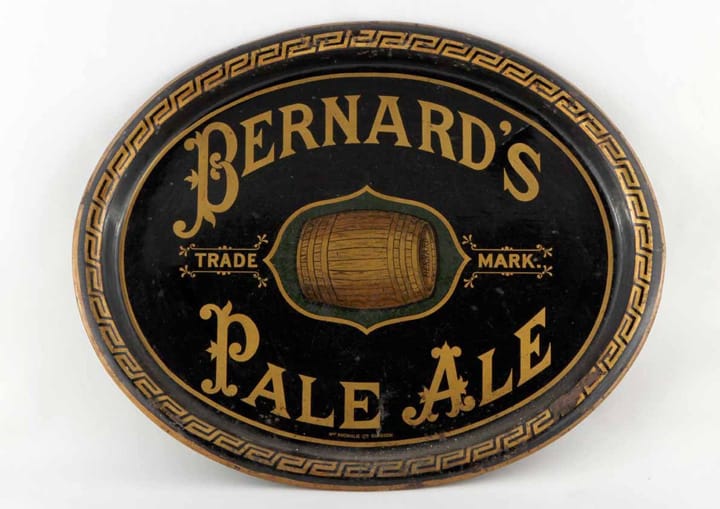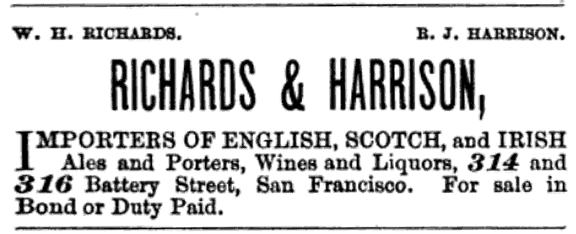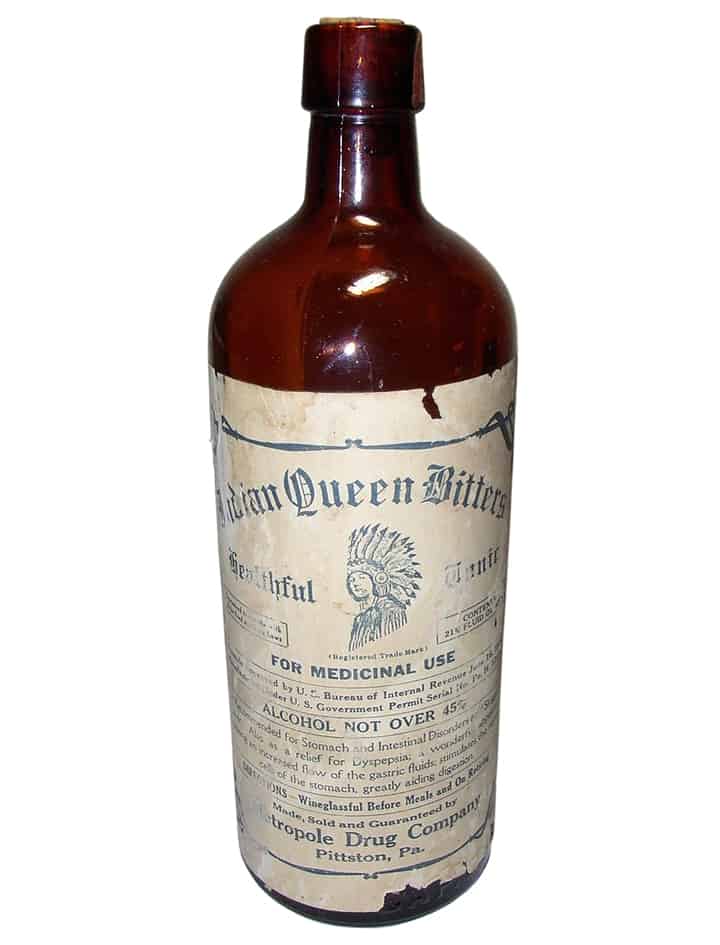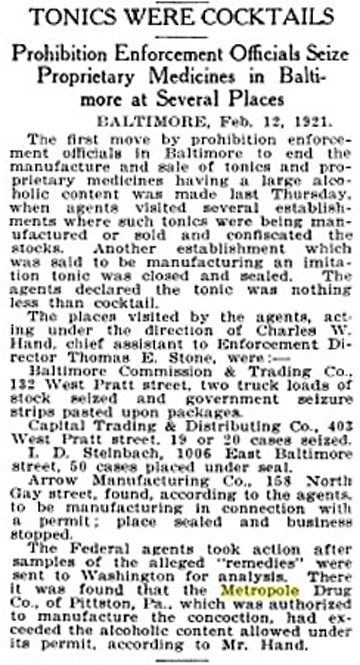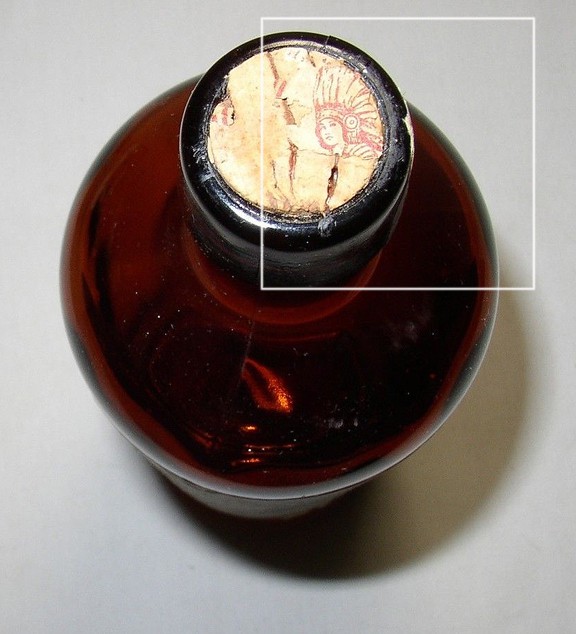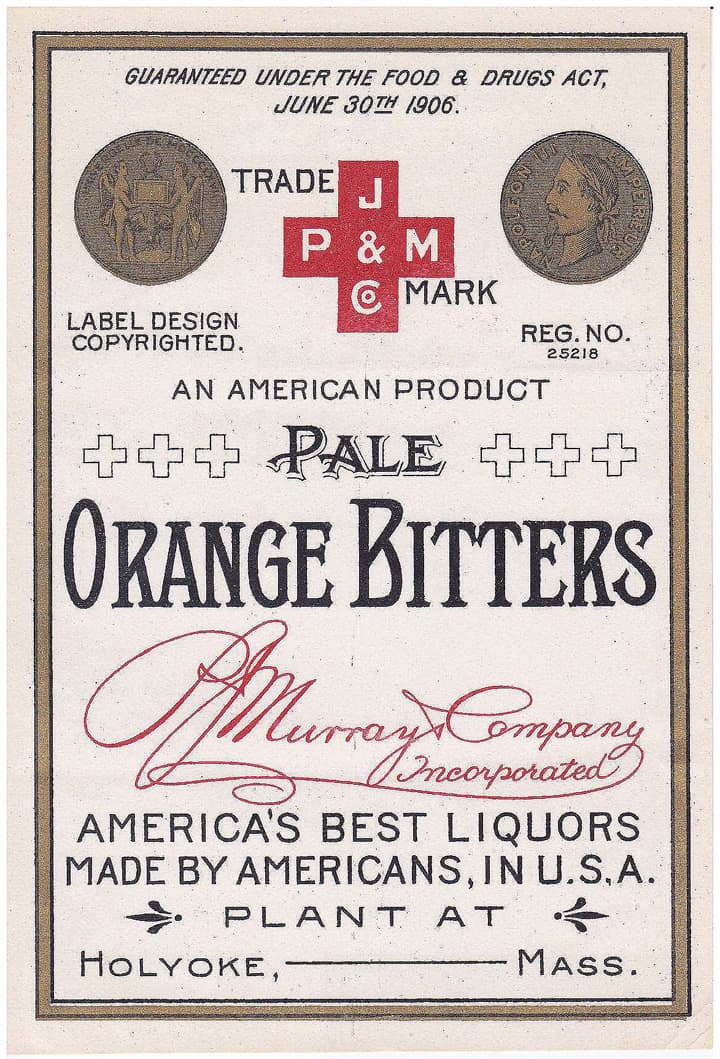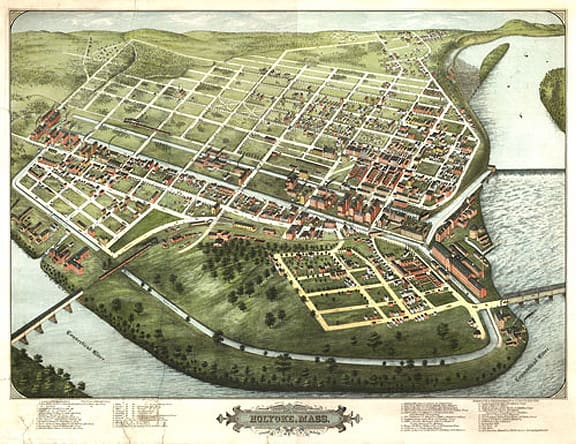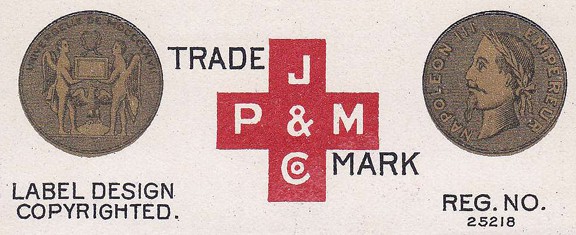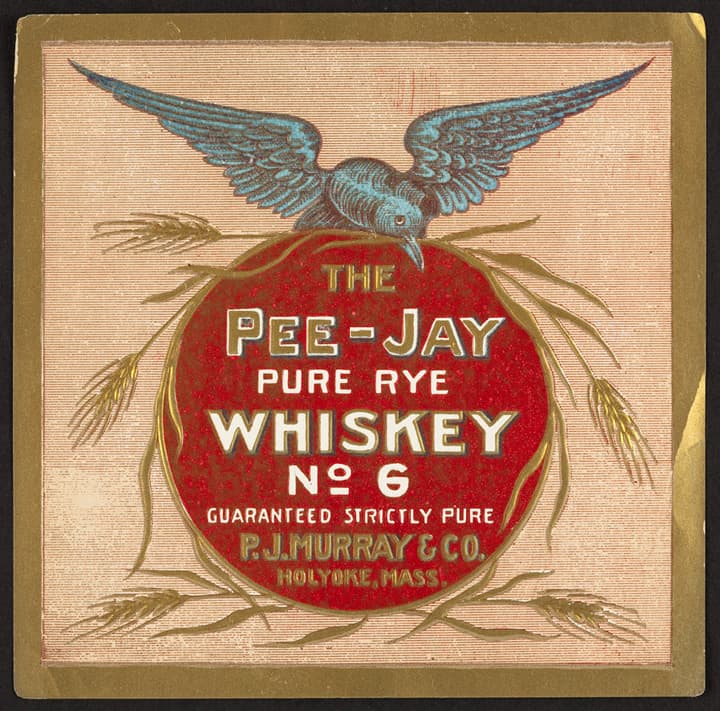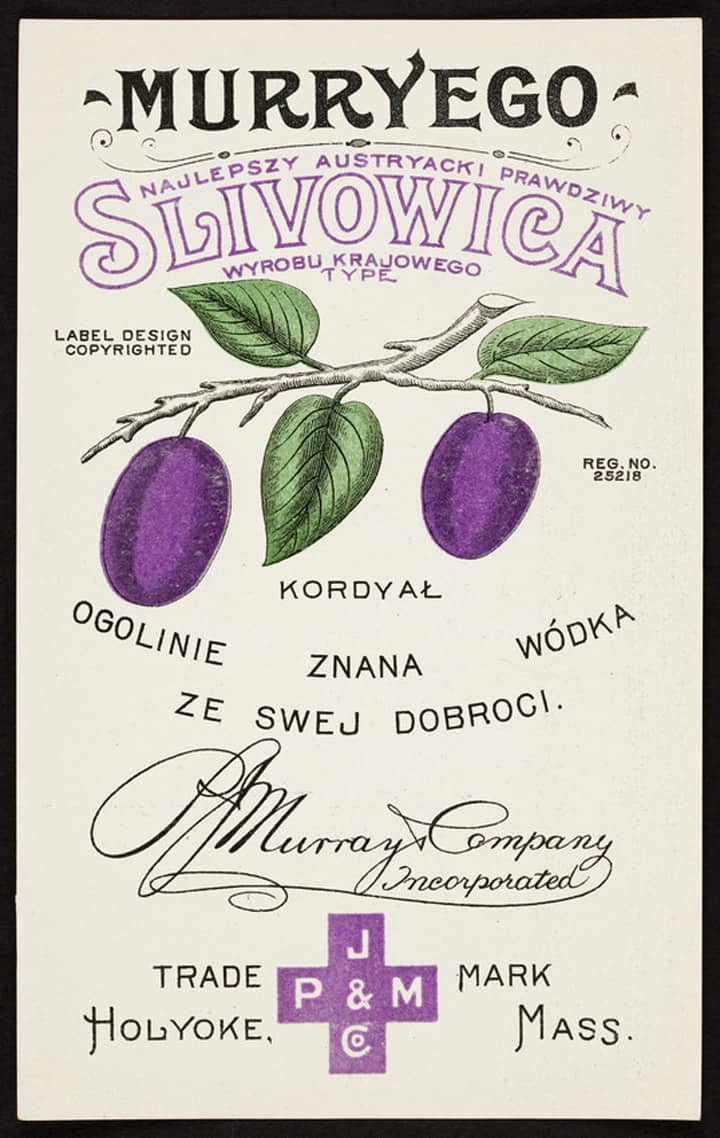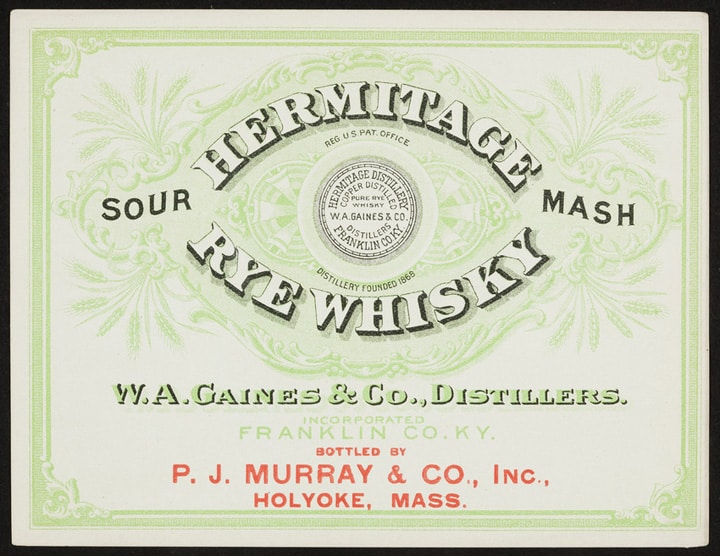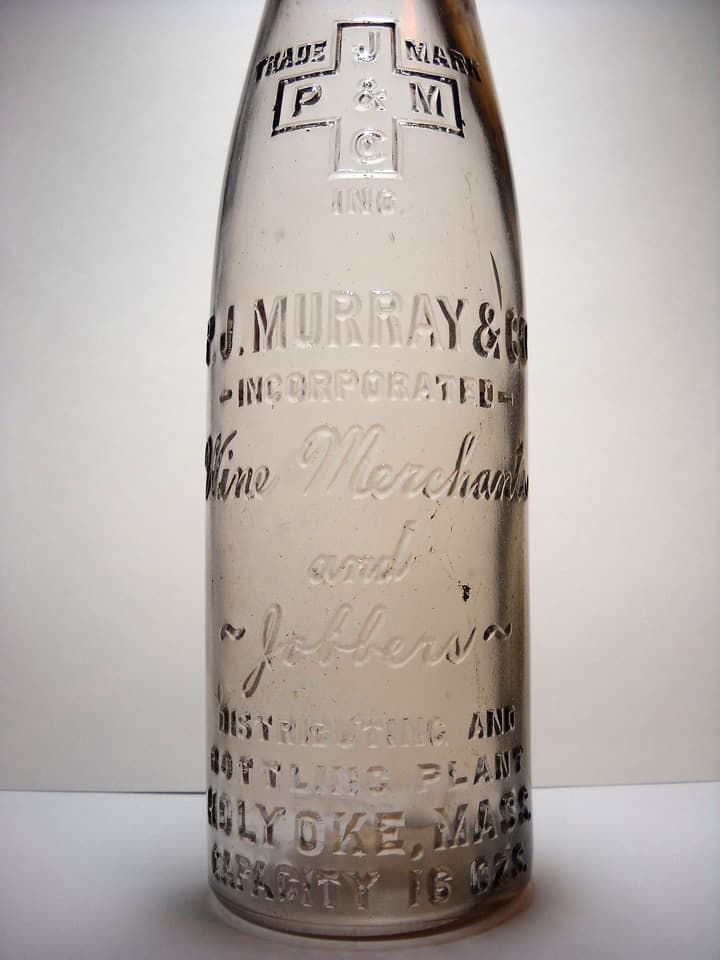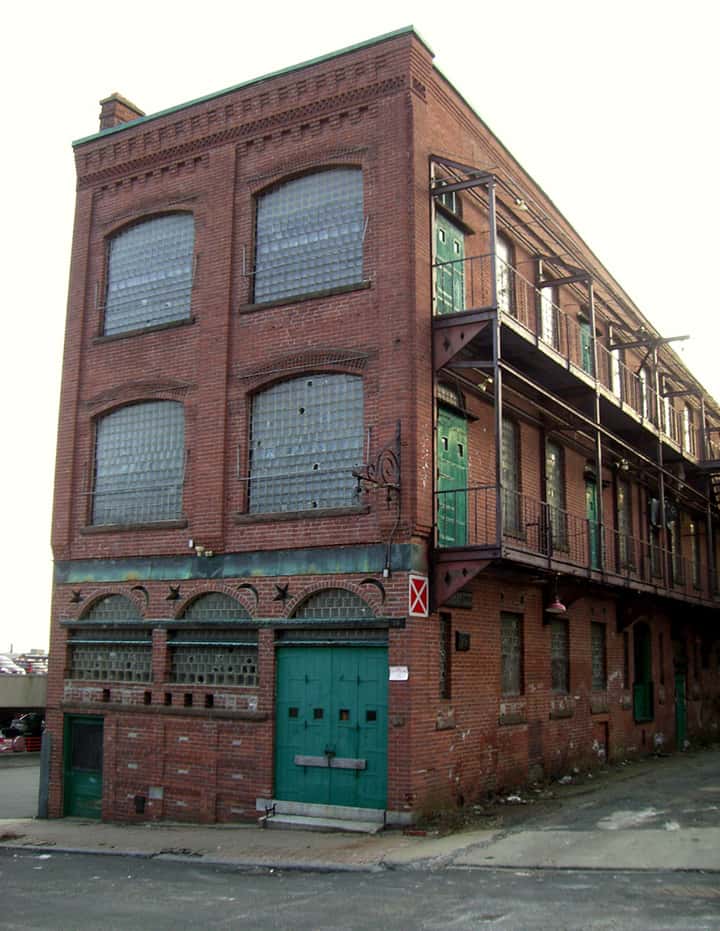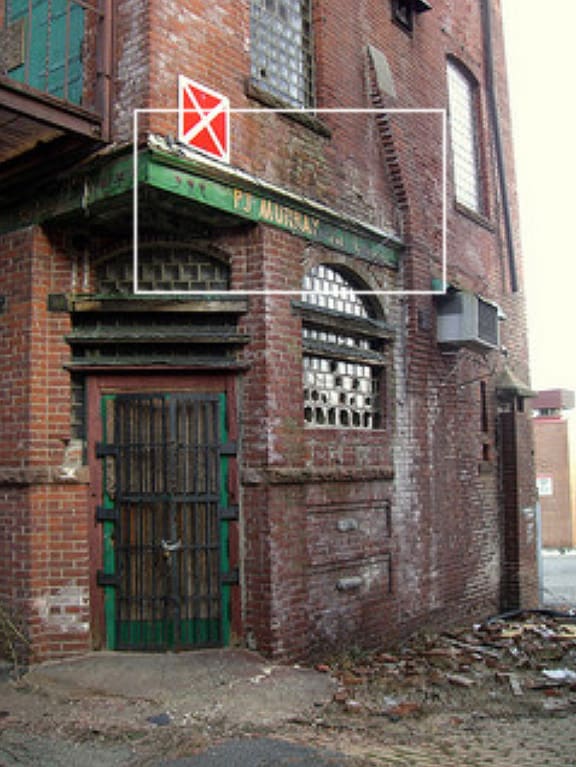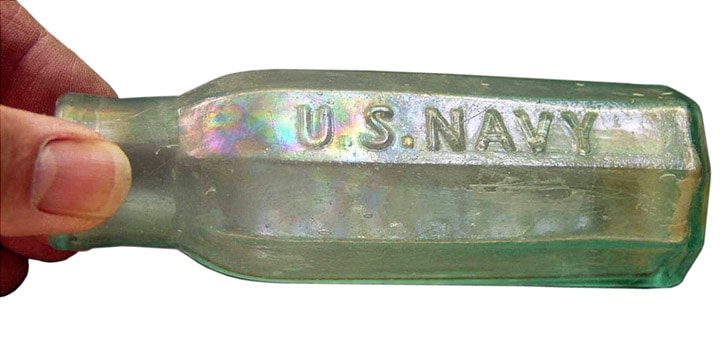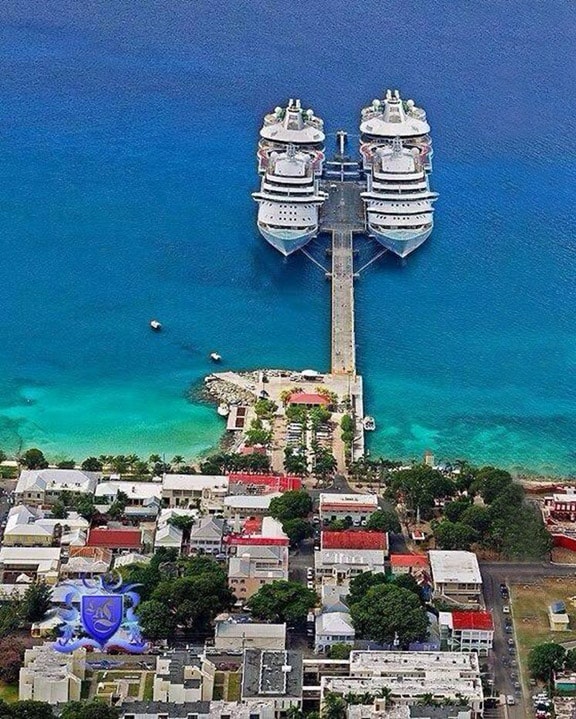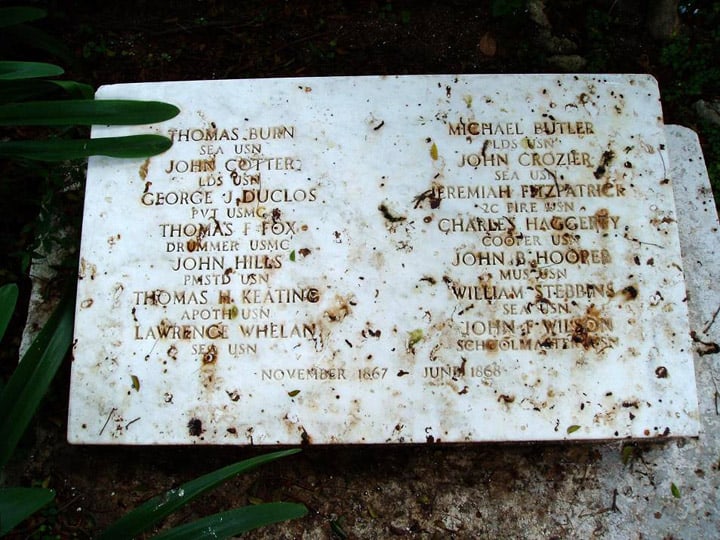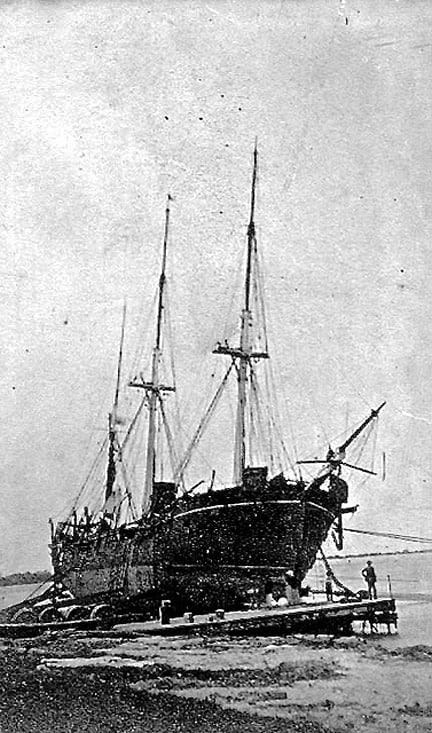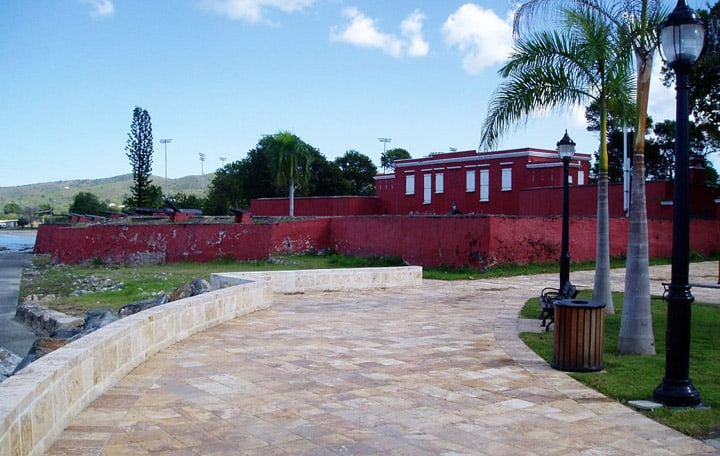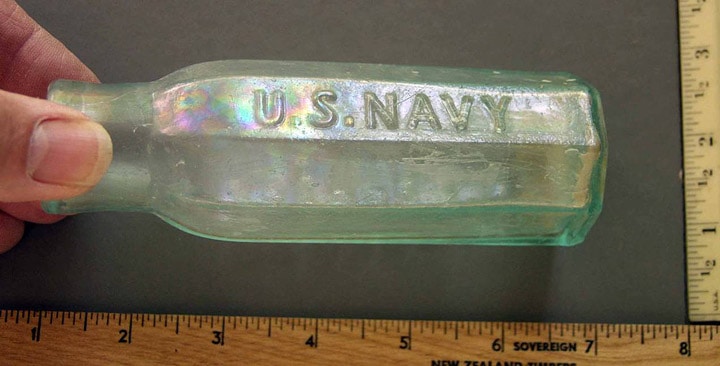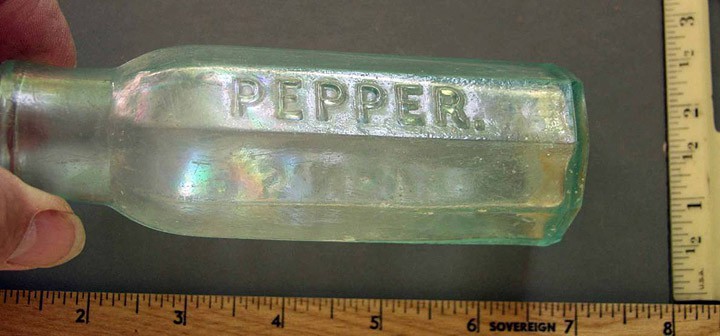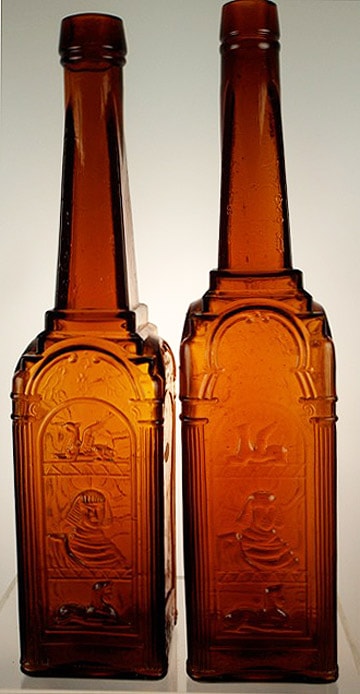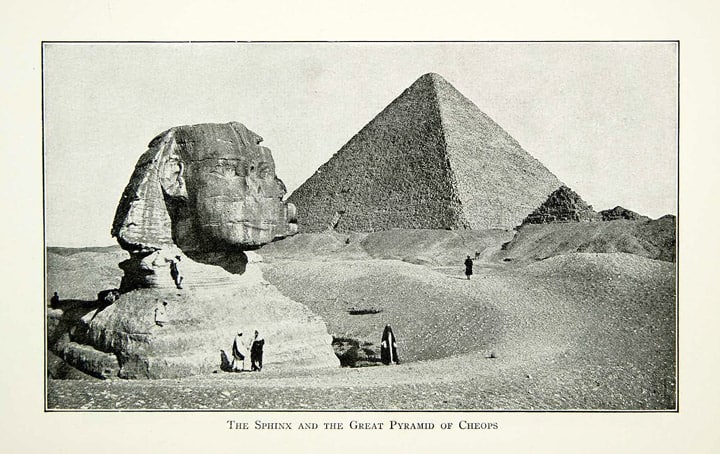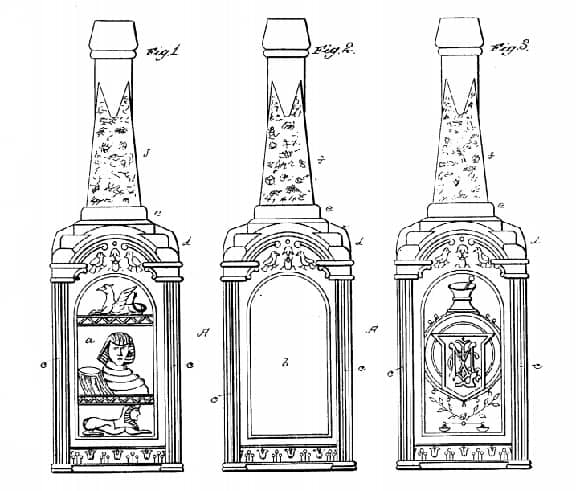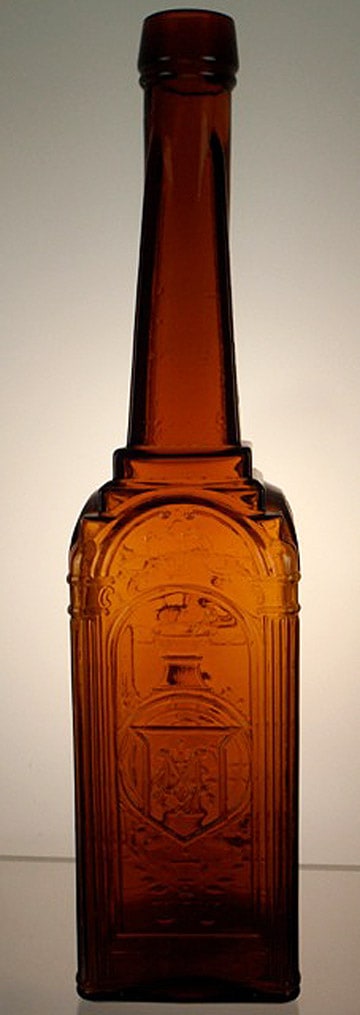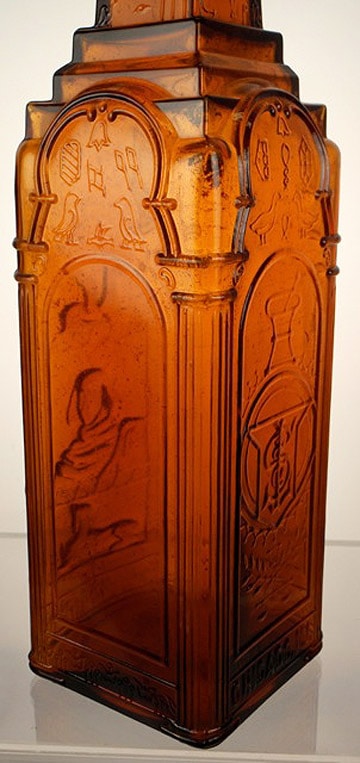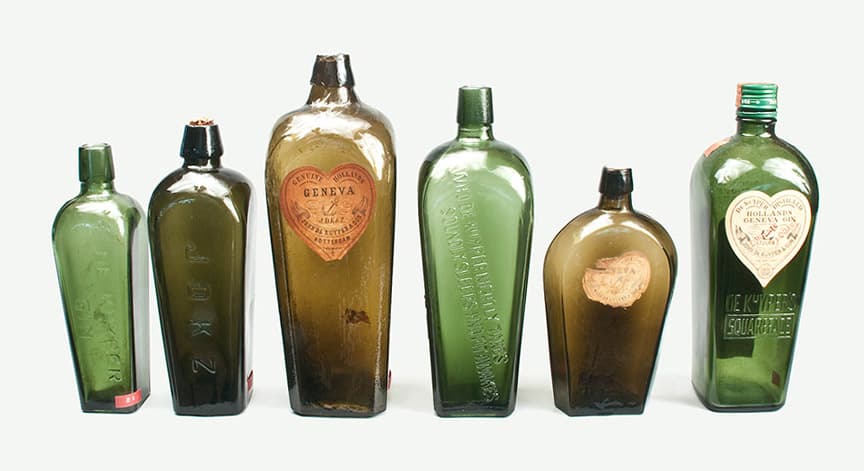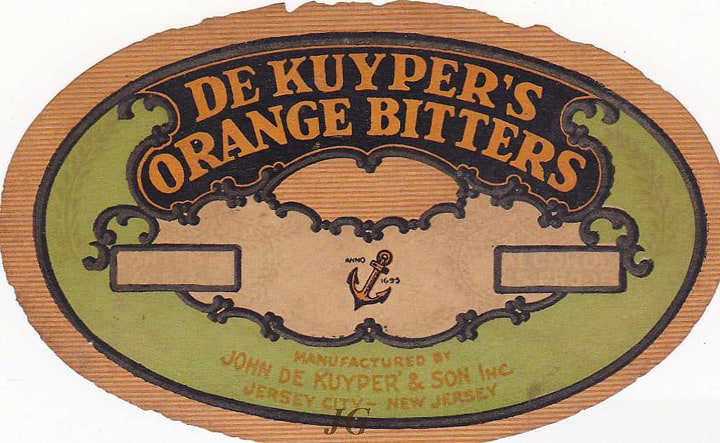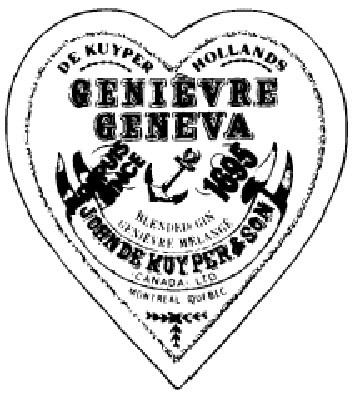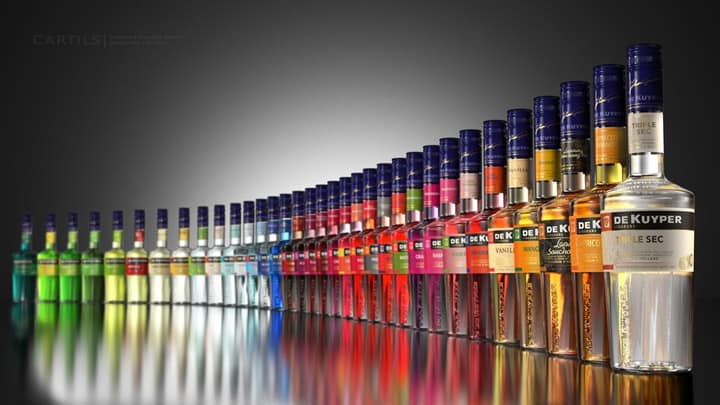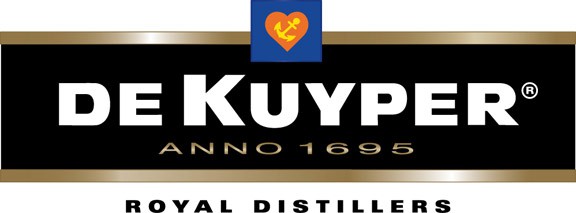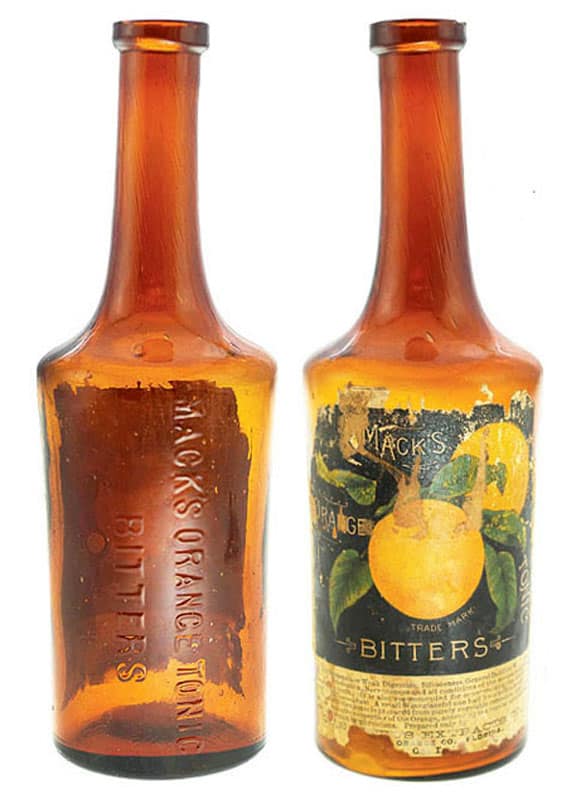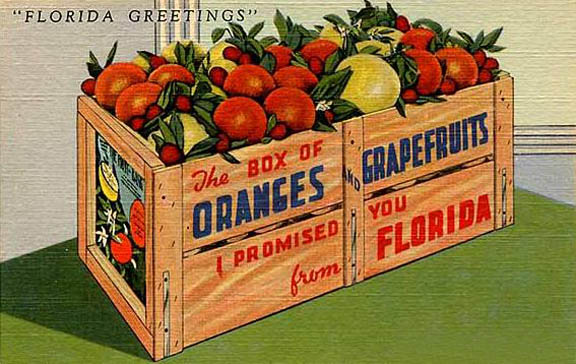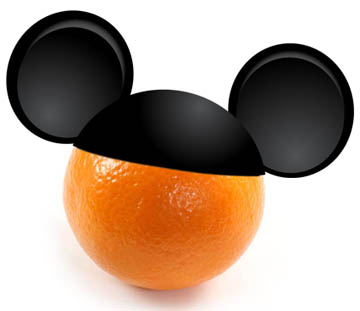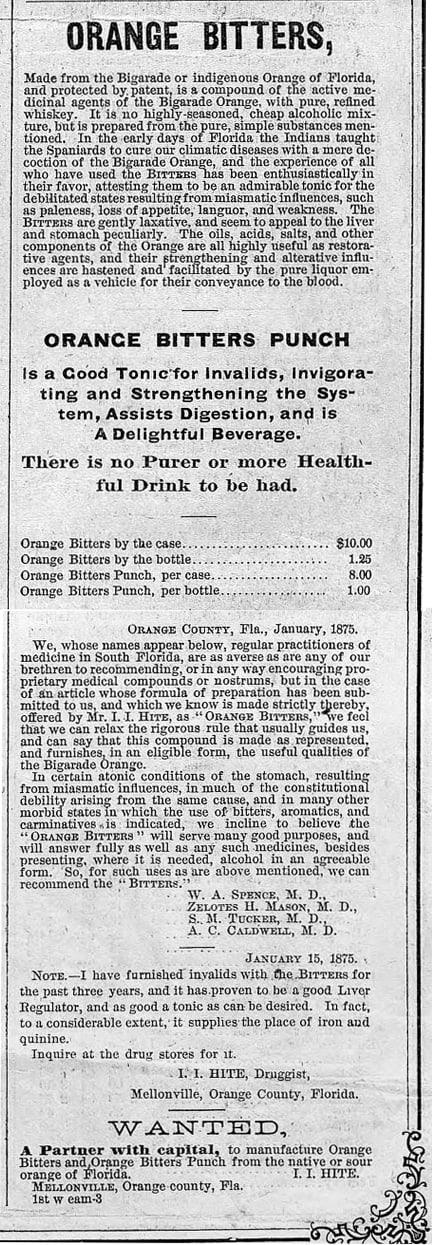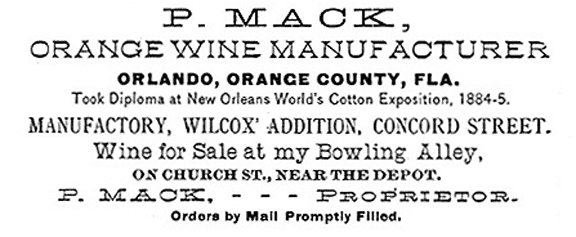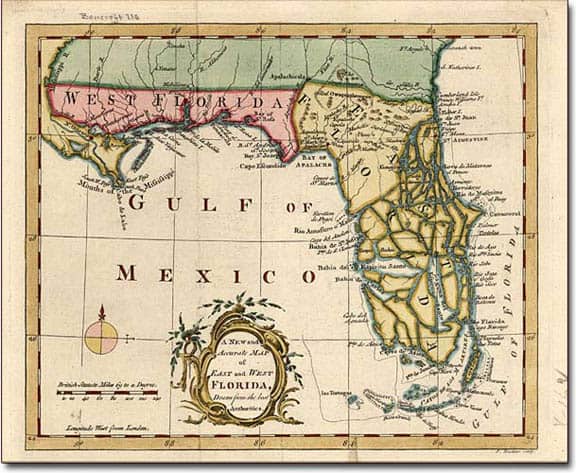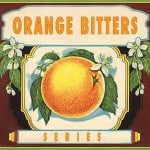 Grandfather’s Perfect Orange Bitters
Grandfather’s Perfect Orange Bitters
PART OF THE ORANGE BITTERS SERIES
16 February 2014
![]() Now here is a really tough brand to identify. Grandfather’s Perfect Orange Bitters is yet another, unlisted orange bitters, represented on the extremely rare, Joe Gourd collection label depicted at the top of the post.
Now here is a really tough brand to identify. Grandfather’s Perfect Orange Bitters is yet another, unlisted orange bitters, represented on the extremely rare, Joe Gourd collection label depicted at the top of the post.
So let us look at what we have to work with. We have the name ‘grandfather’, a portrait of grandfather, the phrases “A Compound American Product”, “Established 1885”, “Guaranteed Under the Food and Drugs Act June 30, 1906” and “Serial No. 18290”. Those are our only clues.
Searching online, reveals no direct or even remote hits for Grandfather’s Perfect Orange Bitters. Lots of hits referring to a “bitter grandfather” which, I guess, was pretty common back then, even now I suppose. Hey, I’ve been a grandfather for 18 years now and I’ve been there before. There is also no proprietor name listed so that closes many search door options. I did find a drink called “The Grandfather” using Angostura Bitters (made by the wizard and his family in Wizard of Oz) and Peychaud’s Bitters.
Lots of hits referring to a “bitter grandfather” which, I guess, was pretty common back then, even now I suppose.
I did find one advertisement for Hostetter’s Bitters directed to “Old Folks” with an endorsement from a grandfather (see below). Hostetter’s had all of the marketing angles covered.
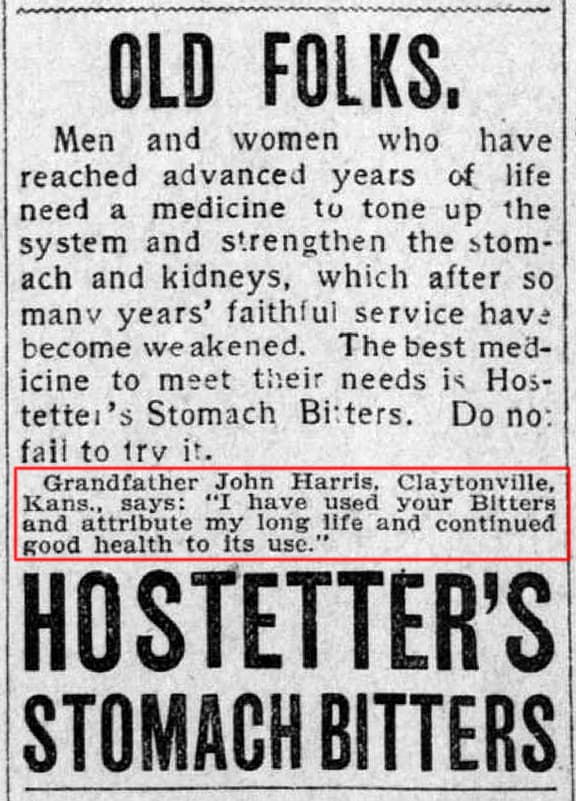
Hostetter’s Bitters directed to “Old Folks” – The San Francisco Call, January 05, 1902
I tell you what. I am going to roll my Peachridge Dice and tell you what I believe this bitters might be. I have a hunch that is not really backed up with any true support. I think I can do this and not get everyone mad at me. Heck, I been wrong lots of times before, just ask Elizabeth. So here we go…
I wonder if it was a ‘Medicinal Whiskey’ product or related to the history of Old Grand-Dad Bourbon Whiskey from the Jim Beam plant in Kentucky? Look at the bottle image below. An orange label and a picture of a grandfather, albeit not the same grandfather image but a ‘grand dad’ image. The label even says since 1882. Yes, I know, I’m really stretching it. But read the history below. There are some clues like grandfather Basil Hayden, the American Medicinal Spirits Company, Harry E. Wilken, the National Distillers Group and R. E. Wathen, that at a minimum, is some interesting reading about the lengths some individuals and companies went to circumvent Prohibition.
Old Grand Dad Bourbon Whiskey
Old Grand-Dad is a brand of bourbon whiskey distilled at the Jim Beam Plant in Clermont, Kentucky. The brand was created by Raymond B. Hayden and named after his grandfather, Basil Hayden, Sr., a well known distiller during his lifetime who is depicted on the front of each bottle. Today, it is owned and produced by Beam Inc. Currently Old Grand-Dad, Old Crow, and Old Overholt are marketed together as The Olds.
The brand was created by Raymond B. Hayden and named after his grandfather, Basil Hayden, Sr., a well known distiller during his lifetime
The Hayden family’s first commercial distillery was created in 1840, and the whiskey has been in production since that time despite several changes of ownership. In 1899, Old Grand-Dad was sold to the Wathen family, whose broad interests in the whiskey business later formed the American Medicinal Spirits Company and the foundations of National Distillers Group.
During prohibition, the company produced “medicinal whiskey” for sick, blind, and lame patients.
During prohibition, the company produced “medicinal whiskey” for sick, blind, and lame patients. In 1987, National Distillers Group sold the spirits business to the Fortune Brands holding company, which became Beam Inc.
Today, Old Grand-Dad is one of the ten best-selling straight whiskeys. It comes in three different bottling proofs: 80 proof, 100 proof Bottled In Bond, and 114 Barrel Proof in a short-height bottle gift box package. In 2013, the lower proof offering went from 86 proof to 80 proof. Beam now also markets another brand of Kentucky bourbon, Basil Hayden’s, that is named after the same person. [Wikipedia]
Basil Hayden
Basil Hayden’s is the lightest bodied bourbon whiskey in the family of Jim Beam small batch bourbons produced by Beam Inc.. It is 80 proof, in contrast with its three sibling brands of higher alcohol concentration (Knob Creek, Booker’s, and Baker’s).
The Basil Hayden’s bourbon brand is named in honor of Basil Hayden, Sr., who was a Maryland Catholic that led a group of twenty-five Catholic families from Maryland into what is now Nelson County, Kentucky (near Bardstown) in 1785. This area is home to many of the famous bourbon brands, including Jim Beam. There Hayden donated the land for the first Catholic church west of the Alleghenies and the first Catholic church in what is now the Commonwealth of Kentucky.
Read: 2014 Lexington National Banquet Speaker “Mr. Bourbon”
Hayden was also a distiller, and he used a larger amount of rye in his mash than in some other bourbons. Later, Hayden’s grandson Raymond B. Hayden founded a distillery in Nelson County and named his label “Old Grand-Dad” in honor of his grandfather. The picture on the bottle was copied from a rendering of Basil Sr.’s likeness. When Beam Industries introduced their “small batch” collection, among the four was “Basil Hayden’s”, which the company says uses a mash similar to that originally utilized by Hayden in 1792.
Hayden’s family can be traced back to England (Norfolk) to the period shortly after the Norman Conquest. One ancestor, Simon de Heydon, was knighted by Richard the Lionheart in the Holy Land during the Third Crusade in the 1190s. His son, Thomas de Heydon, was made Justice Itinerant of Norfolk by Henry III. Around 1400, another ancestor, John Heydon, appears to have been associated with “The Grove” – a large estate in Watford (Hertfordshire), located about twenty miles northwest of London. Some researchers have speculated that John Heydon was given the estate for his father Sir Richard de Heydon’s services in the French Wars, where Sir Richard perished. Others are less sure. But Heydons definitely lived in Watford from the fourteenth through seventeenth centuries.
The Heydons emigrated to the Virginia Colony in the 1660s, when much of Britain became inhospitable to Catholics. Francis Hayden, Basil’s great-grandfather and the first Heydon (then switching to Hayden), moved from Virginia to Maryland in 1678, settling in St. Mary’s County on St. Clement’s Bay, where the family remained until Basil led his band of Catholic families into present-day Nelson County, Kentucky. During the American Revolution, Basil supplied provisions to the Colonial Army. [Wikipedia]
American Medicinal Spirits Company
The American Medicinal Spirits Company appears to have been formed around 1920 to meet the need of providing medicinal whiskey to the lame and blind during Prohibition after the passage of the Volstead Act in 1919. The process of consolidation in the liquor industry had started prior to the passage of the Volstead Act. The smaller companies resisted take-over and often managed to undercut the big companies prices and stay in favor with their local patrons. Prohibition would deal the death blow to most.
Among those was the the American Medicinal Spirits Company – one distilling family’s answer to the crushing Federal Legislation.
The number of distilling establishments in the United States started to decline after hitting a peak number of 965 establishments in 1899. By 1914, the number had dropped to 434 establishments and throughout the Prohibition years it ranged from only 27-33 distillers. Among those was the The American Medicinal Spirits Company – one distilling family’s answer to the crushing Federal Legislation. There would be only handful of companies ready when the ban was lifted to consolidate and dominate the liquor market. The American Medicinal Spirits Company would be one of them and was one of the few distillers legally selling booze during the prohibited years. [Digger Odell]
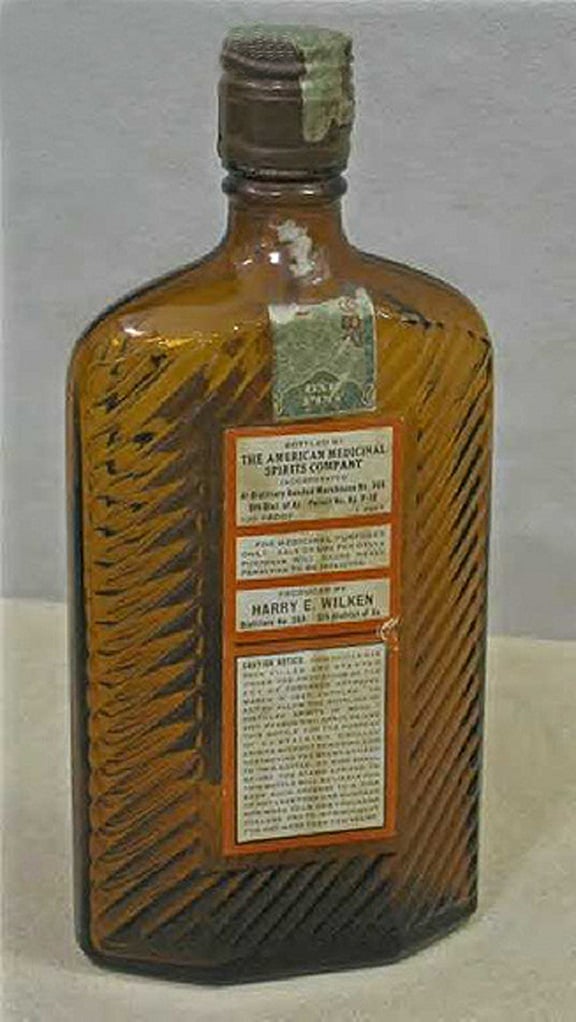
Old reserve “Bourbon Whiskey” made in fall 1917 that was bottled in the fall of 1932 by The American Medicinal Spirits Company produced by Harry E. Wilken.
Old Reserve Bourbon Whiskey
Old reserve “Bourbon Whiskey” made in fall 1917 that was bottled in the fall of 1932 by The American Medicinal Spirits Company produced by Harry E. Wilken.
This bottle has all labels that say “Special old reserve-fine old Bourbon Whiskey made in Kentucky before Prohibition, stored in the finest Oak barrels for over 15 years and bottled in bond under Government Supervision especially for the stockholders of the National Distillers Products Corporation. The American Medicinal Spirits Company incorporated R. E. Wathen, Pres.” The back label is in four parts. The first says “Bottled by the American Medicinal Spirits Company incorporated at distillery bonded warehouse no. 368 5th Dist. of Ky. Permit no. Ky. P-18 100 proof 1 pint.” The second part says “For medicinal purposes only. Sale or use for other purposes will cause heavy penalties to be inflicted.” Part three says, “produced by Harry E. Wilken Distillery No. 368. 5th district of Ky.” The fourth part says “Caution notice, this bottle has been filled and stamped under the provisions of the act of congress. Approved March 3, 1897. Entitled an act to allow the bottling of Distilled spirits in bond. Any person who shall re-use this bottle for the purpose of containing distilled spirits without removing and destroying the stamp affixed to this bottle, or who shall re-use the stamp affixed to this bottle will be liable for each such offense to a fine of not less than one hundred nor more than one thousand dollars and to imprisonment for not more than two years.” [i-offer]
Harry E. Wilken
Seeking a companion blended whiskey to popularize, Schenley consulted Harry E. Wilken, chief distiller for Joseph S. Finch & Co., a Schenley subsidiary at Schenley, Pa. Distiller Wilken produced a formula for a blend of four-year-old whiskey, 16-month whiskey, and neutral spirits (alcohol and water). Last week it was launched as The Wilken Family Blended Whiskey, along with an advertising campaign designed to endear Distiller Wilken & family to the whiskey-drinking public.
The Wilken family is shown, usually in shirtsleeves, sitting on barrels in their warehouse, gazing reverently at a picture of Grandfather Wilken, fishing on a riverbank near Schenley.
First advertisement introduced Distiller Wilken, his two sons, Harry Jr. and William, his son-in-law, Thomas McConville. Subsequent advertisements will add to the family Mr. Wilken’s late, whiskeymaking father. They could bring in Mrs. Wilken, Daughters Mary and Adeline (Mrs. McConville), Grandson Billy McConviilc. The Wilken family is shown, usually in shirtsleeves, sitting on barrels in their warehouse, gazing reverently at a picture of Grandfather Wilken, fishing on a riverbank near Schenley.
Keynote of the campaign: One time, it must have been two years ago, when we were all sitting around after supper I said to myself and the boys: “You know, boys, I sort of have a feeling that people would sure love just to get a taste of our own family’s whiskey.” So we set about making it. And now you’ve got it. And I bet it tastes as good to you as it does to us!
Distiller Wilken was presented last week as “the man who has actually made more whiskey than any living person.” At ? he was put in one of his father’s distilleries as manager. Few years later he was put out when his father sold the distillery. Thereafter Son Harry manufactured Bourbon for various companies, alcohol for the Government during the War, medicinal whiskey for Schenley during Prohibition. Stocky, round-faced, white-haired, he bustles around his plant with his hat pushed back on his head, continually begging the pardon of girl packers with whom he collides. The company baseball team knows that it is in for a stern reprimand from him if it ever loses a game. To keep fit he drinks a jigger of whiskey before every meal and at bedtime.
Wilken Family Whiskey is made by The Wilken Family, Inc. in the Schenley plant and Schenley owns a controlling interest. But by basing his campaign on his own family, Schenley’s Wilken has assured his descendants of jobs. Son Harry Jr. assists in the distilling, Son William manages the blending, while Son-in-Law Tom, an engineer, keeps the machinery in order.” [Time magazine, Monday, Aug. 26, 1935]
Conclusion:
This is all just a wild goose chase that was fun putting together. The mystery and story of this Grandfather’s Orange Bitters remains to be solved and told. I was hoping to find that Basil Hayden, Sr. made this concoction in 1885 and sold it with his whiskey label to the Wathen family who resurrected the brand as either a non-alcoholic bitters or who added their whiskey to it and sold it as “medicinal whiskey” with the American Medicinal Spirits Company. I can almost imagine that bottle pictured above with Grandfather’s Perfect Orange Bitters on it.
If Jack Sullivan is reading this, Jack I bet you could solve this one. Jack has the web site Pre-Pro.com and is the ‘grandfather’ of this type of research. Help this grandfather out.
Bernard’s Orange Bitters and a trip to Edinburgh, Scotland
Pale Orange Bitters and PJ Murray’s Ghost
Mack’s Orange Tonic Bitters – a sweet bitters from Orlando
California Aromatic Orange Bitters – San Francisco
Fine Aromatic Orange Stomach Bitters – Berry, Demoville & Co. – Nashville
Roped Squares – Baker’s Orange Grove Bitters

